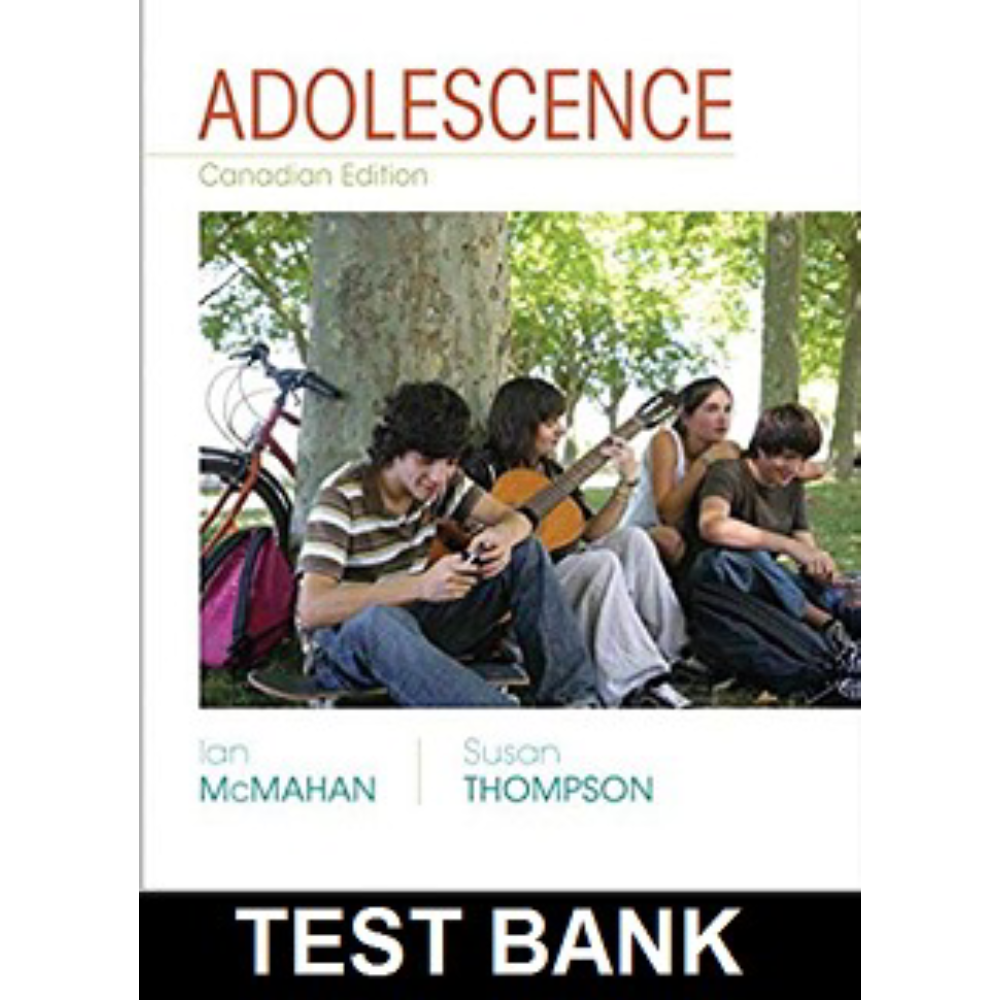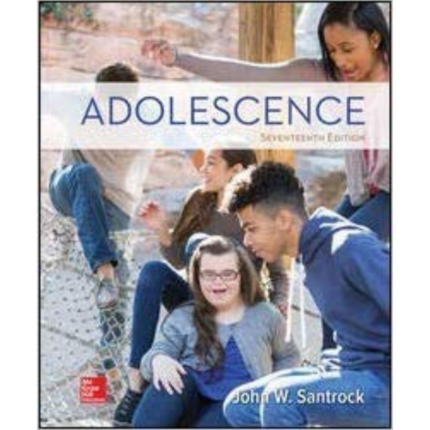Adolescence Canadian 1st Edition By McMahan – Test Bank
Chapter 11: Challenges
Multiple Choice Questions
1) Teens with _____ problems tend to have weak impulse control and are more likely to be boys than girls.
A) somatizing
B) internalizing
C) externalizing
D) psychologizing
Answer: C
Page Ref: 379
2) Xaviar was caught vandalizing a local cemetery. He also gets into fights at school. It is likely that
A) his problems are the result of a difficult transition into adolescence.
B) he also had conduct problems as a child.
C) he will go on to become a career criminal as an adult.
D) he suffers from a hormonal imbalance.
Answer: B
Page Ref: 379
3) Actions such as buying cigarettes or alcohol that are against the law for minors but not for adults are known as
A) status offences.
B) delinquency.
C) juvenile infractions.
D) minor violations.
Answer: A
Page Ref: 379
4) Teens with _____ problems tend to repress their impulses and are more likely to be girls than boys.
A) externalizing
B) psychologizing
C) internalizing
D) somatizing
Answer: C
Page Ref: 379
5) Researchers find that many teens with conduct problems are also depressed; this is an example of
A) disinhibition.
B) overlapping disorders.
C) amplification.
D) comorbidity.
Answer: D
Page Ref: 379
6) Depression, anxiety, and eating disorders are among the more common _____ problems during adolescence.
A) externalizing
B) psychosomatic
C) internalizing
D) incurable
Answer: C
Page Ref: 379
7) Slobadan skips school, gets into a lot of fights, and commits vandalism. He is exhibiting _____ problems.
A) internalizing
B) externalizing
C) personality
D) somatizing
Answer: B
Page Ref: 379
8) The offenses known as index crimes include
A) violent crimes.
B) status offenses.
C) property crimes.
D) Both A and C.
Answer: D
Page Ref: 380
9) The most common offence committed by Canadian youth is
A) mischief.
B) drug violation.
C) theft under $5000.
D) homicide.
Answer: C
Page Ref: 381
10) __________ is a legal term for behaviours such as truancy and running away, misconduct like being disruptive in school, and minor offences such as gambling.
A) Delinquency
B) Antisocial behaviour
C) Conduct disorder
D) Young offender
Answer: A
Page Ref: 380
11) Between 2001-2010, the rate of violent crimes in Canada by those under 18 has
A) stayed level.
B) climbed sharply.
C) declined.
D) fluctuated randomly.
Answer: C
Page Ref: 380













Reviews
There are no reviews yet.